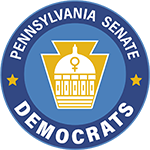By a vote of 46-2, the Senate passed a measure that would allow drivers to operate small electric vehicles on some roads. Senate Bill 83 would allow the use of Neighborhood Electric Vehicles (NEV), four wheeled electric vehicle with a maximum design speed between 20 and 25 mph, to operate on highways with speed limits no higher than 25 mph.
The Secretary of Transportation and municipal governments could approve travel on selected state roads with a posted speed limit between 25mph and 35mph. The vehicles would be required to be equipped with basic safety equipment such as brakes, mirrors, seatbelts, lights, windshield wipers, a battery charge indicator and a horn. NEVs would be required to show a “slow moving vehicle” emblem on the back of the vehicle.
The bill now heads to the House.
* * *
By a vote of 45-4, the Senate passed a bill that would eliminate reporting requirements for insurers or groups that provide medical malpractice insurance. In response to a sharp rise in malpractice insurance premiums in the late 1990s and early 2000s, the General Assembly passed the Medical Care Availability and Reduction of Error (MCARE) Act in 2002. Among the components intended to assess the cause of premium increases was a requirement that any insurer issuing malpractice insurance file an annual report with the state Department of Insurance. Senate Bill 194 would eliminate that requirement.
The bill now goes to the House.
* * *
The Senate unanimously passed Senate Bill 82, which would provide additional protection for people who purchase a defective or sickly dog.
Under the bill, the buyer would be refunded if the dog they purchased has an incurable disease or ailment. The measure would also expand the time-span in which a dog purchaser could have a veterinarian check for diseases or certify an illness. The bill also changes the definition of animals “unfit for purchase” from illnesses that “severely affect” to ones that have “a significant adverse affect.”
The bill now goes to the house.
* * *
The Senate unanimously approved Senate Bill 436, which would amend the Pennsylvania Election Code to remove the sunset date for voting standards adopted by the previously-created Voting Standards Development Board.
This change would allow the current federally-required voting standards to remain in place. Otherwise, the current voting standards would not apply to elections held after 2012.
The bill now goes to the house.
* * *
The Senate unanimously passed Senate Bill 371, which would repeal the Savings Association Code of 1967. The outdated code provides state-chartered savings and loan associations with their powers, and regulates those powers. While there used to be hundreds of savings and loan associations in Pennsylvania, only four remain.
The measure would repeal the code, aiding an effort by the Department of Banking to eliminate the program that regulates and examines these four savings and loan associations — encouraging the associations to convert to a state-chartered savings bank form.
This would provide the state with a small savings by absorbing the four small savings associations into the same regulatory system as savings banks.
The bill is now in the House.
* * *
The Senate unanimously approved legislation that establishes a new equitable formula to distribute special education funding; an accountability system to ensure effective investment of resources; and a special education funding commission.
Special education funding is currently distributed based on an estimate that the average daily enrollment of each district includes 16 percent of special education students.
Under Senate Bill 470, the commission would review and make recommendations on special education funding in Pennsylvania; draft proposed regulations and legislation on findings related to charter and cyber charter school funding requirements regarding special education students; hold public hearings at various locations statewide; and issue a report on its findings and recommendations by Sept. 30, 2013.
Under the bill, the funding formula must recognize three cost categories of special education students based on the range of student service needs and determine a weighted special education student count based on the average of the three most recent school years for each category. They may also utilize a proportional system for distributing changes in special education funding among school districts, consider special education funding throughout the United States, include the potential impact the distribution of special education funding may have on school districts and review potential cost savings.
The bill is now in the House.
